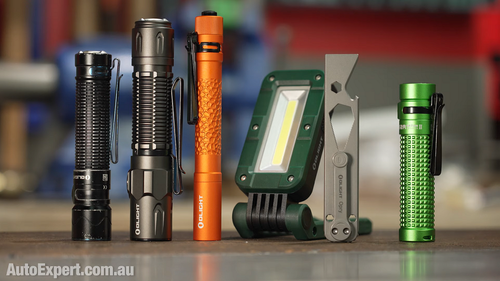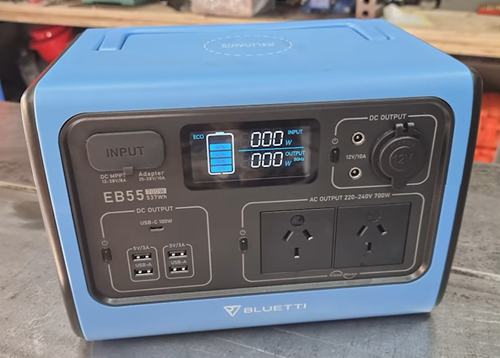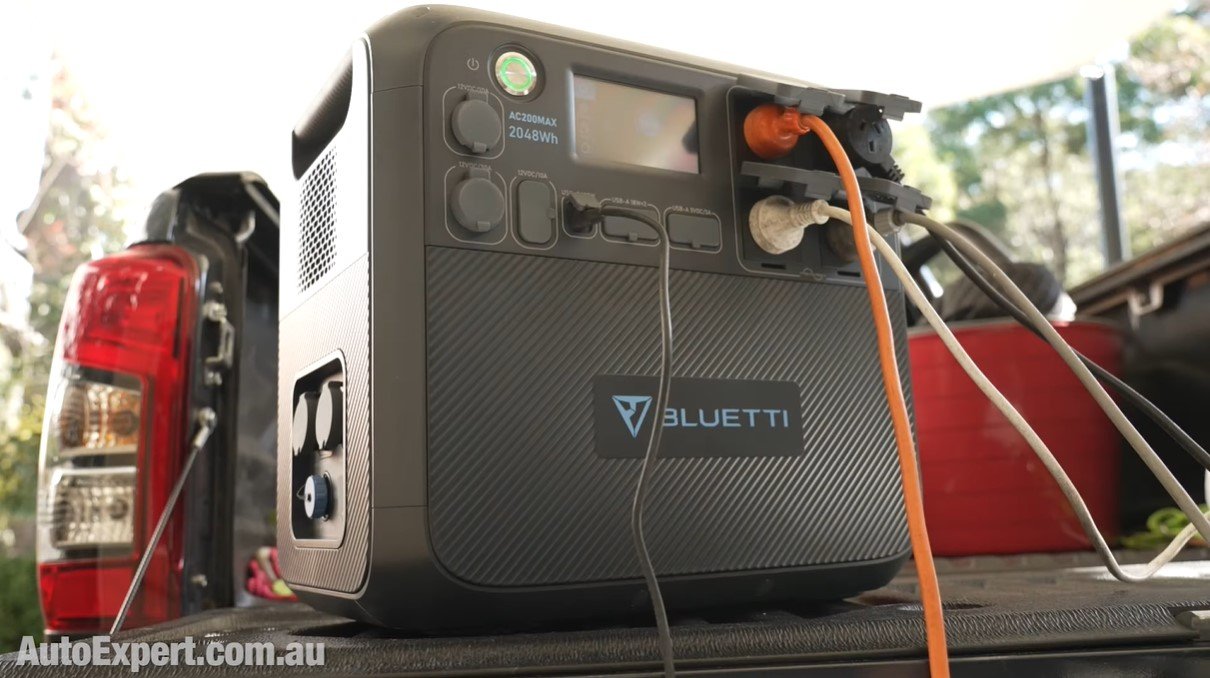Sorry, Mercedes: Here's why your eVito electric courier van sucks
Ford Australia will be celebrating the launch of Mercedes-Benz’s new, wholly-underdone excuse for an electric van - the eVito. Here’s why it simply won’t do the job…
Mercedes-Benz Vans Australia has announced an exciting new electric van for environmentally conscious serial killers, tradies and morticians.
It’s the eVito for just $90,000 (before on-road costs).
The truly exciting bit is: it's only somewhat worse in every respect than the upcoming Ford e-Transit Custom, so that's nice, not to mention entirely consistent.
General advice to marketing and PR professionals everywhere on Earth: do stop trying to be so clever with your next EV - it’s just not working.
Mercedes-Benz Vans Australia says:
“Take charge” - that's almost as bad as Ford's bullshit allegation that the “all new all-electric e-Transit Custom is set to spark the EV revolution”.
If your 12-year-old committed that in an English assignment, perhaps you'd give them, I don't know, another medal for mediocrity. But aren't we all trying to be grown-ups here?
Mercedes-Benz’s eVito abduction van is equipped with - incredibly - 20 percent less battery than the upcoming Ford e-Transit Custom, as well as 47 percent less power and 13 percent less torque. Hat trick.
So, Merc eVito: 85 kilowatts. Ford e-Transit 160 kilowatts. Dearborn is most grateful, Stuttgart. For the extra sales, that is.
Pro Tip: There is no such thing as a “60 kilowatts per hour battery pack”. Out of respect for everyone who did actually pay attention at school, you'd think Mercedes-Benz Australia could actually bother to get the units right.
Kilowatt-hours are on every electricity bill you have ever received. Kilowatt-hours or kWh are not new. They're kind of new in cars but then certainly not new in life.
There are engineers who work at Mercedes-Benz, right? The best or nothing, etc?
Unfortunately, eVito is beaten on performance by every filthy planet-killing diesel Vito, which offers 65 percent more power and 22 more torque, according to data from Redbook.com.au for the 2022 dead dinosaur powered Vito 119 CDI.
This of course is not exactly how Mercedes actually sees it.
Clearly someone got out the buzzword generator for this one. Although, to be fair I do think there's tremendous enthusiasm for ‘pulling’ generally throughout the entire Daimler empire.
The average power developed by a pair of bullocks for farm work is about - have a guess - it's one. One horsepower.
That would be half a horsepower per beast or roughly 400 watts apiece, that’s 0.4 kilowatts for a bullock.
So to senior communications professionals at Daimler, I would say eVito is quite poor on power - agreed. But it’s not quite as bad as you have made it out to be.
If you don’t know what kilowatt-hours, amps, power vs energy, three-phase or watts are, my Understanding Batteries report >> will fix that. You might want to know for the next part of this report… (keep scrolling)
My AutoExpert AFFORDABLE ROADSIDE ASSISTANCE PACKAGE
If you’re sick of paying through the neck for roadside assistance I’ve teamed up with 24/7 to offer AutoExpert readers nationwide roadside assistance from just $69 annually, plus there’s NO JOINING FEE
Full details here >>
AutoExpert DISCOUNT OLIGHT TORCHES
These flashlights are awesome. I carry the Olight Warrior Mini 2 every day - it’s tiny, robust, and super useful in the field or in the workshop. Olight is a terrific supporter of AutoExpert.
Use the code AEJC to get a 12% discount >>
Generators suck! Go off-grid with AutoExpert BLUETTI PORTABLE POWER STATIONS
Need mobile, reliable power? If you’re camping, boating, caravanning or building a dirty big shed in the back paddock, and you need to run a refrigerator, lights, air conditioner, cooking, and/or a bunch of tools - Bluetti has a clean, tidy, robust solution…
Get your AutoExpert free shipping discount here: https://bit.ly/3n62heK
How to fudge your range claims in 10 words (or less)
When it comes to pulling a swifty, nobody does it better than Mercedes-Benz:
This is a PR master stroke (were it not for me). An excellent marketing strategy in play, using the oldest, most outdated driving standard, which is also the most misrepresentative of EV range in the real world. It also has not been updated since 1990, which is only a quarter of a century out of date.
It seems to me they're kind of just hoping that nobody notices, or at least calls them out on it. Sorry, Mercedes. (Only not).
The fact AutoExpert would not take Three-Prong’s advertising money if it was thrown by a howitzer, means I can report to you that I did notice, and that 262 kilometers on these misnamed ‘New European Driving Cycle’ is probably about 20 better than it would be if you use the newer ‘world harmonized’ (called the WLTP driving standard).
So, shitbox eVito (NEDC) of 262 kilometres would be kind of ballpark about 210 kilometres on the newer WLTP standard.
The Ford e-Transit manages to acquit itself with 380 kilometres on WLTP, which is just 80 percent further.
THE WEIGHTY ISSUE
The eVito has a payload of 882kg and a GVM of 3200kg, so it weighs a massive 2.3 tonnes essentially dead empty. That's about 100 kilos less than a LandCruiser GX wagon, and you have to ask yourself, ‘What are we hoping to achieve here?’
Saving the planet with tonnes upon tonnes of extra raw materials exploited with every new virtuous EV manufactured.
Pre-pubescent eVito is 400 kilos heavier than the diesel burning post-pubescent Vito big boy van, but it offers roughly 200 kilos less payload. Well done, Mercedes - engineered like no other van.
Did you see that? The little ‘Disclaimer 1’ at the end there.
Call me cynical, but we should all be rather keen to know the detail of these numbered disclaimers hidden in the extra-fine print at the bottom of any information sheet or website, especially when consumers like you might be basing some five-figure financial expenditure upon.
Here’s what Disclaimer #1 says:
If you’re delivering important cargo in your eVito from Sydney to Canberra, for example, you will need to pull off the highway because your NEDC-quoted range isn’t sufficient to take you between Australia two most proximate cities.
At Chargefox station 4030, in sunny Goulburn, those electron bowsers are rated for 50 kilowatts DC, which is pretty common out there in regional Australia.
So let us think about that. If 80 kilowatts x 35 minutes is… 47 kilowatt hours… then a Goulburn electron splash-n-dash is going to take you more like an hour.
You're not going to get from Sydney to Lobby Land in one hit because applying range in NEDC to WLTP, then again into reality is something of a bitter pill to swallow. In fact, you need to knock a bit more range off for a fudge factor, taking into account how hard you drive, traffic, how heavily your van is laden - it’s exactly why electric utes have one big problem >>
In other words, you must stop and wait to recharge >> (if you can find a working, vacant charging station that isn’t prohibitively out of your way), just to make your delivery. You’ll be wasting a lot of productive time; time that makes you money in any other combustion van.
Unlike electric car drivers, Mercedes-Benz, van drivers literally have better places they need to be - otherwise they don’t get paid.
And, like many EVs, Mercedes-Benz has limited the three-phase charge capacity of the puberty blues eVito, to exactly half of what three-phase power can actually supply. How, you ask?
Well, three phases of 240 volts at 32 amps per phase is 22 kilowatts in total. That's what three-phase power can supply out of the wall in Australia.
But eVito can only accept 11. Not the full 22 - not yet anyway.
Now, to be fair, when MG says they've got the same basic limitation on three-phase recharging for their cheap (by comparison) new ZS EV facelift, okay.
Manufacturers do this essentially so that they can get away with the cheaper inverter and/or inverter protection systems. When Hyundai and Kia do this for the same reason on Ioniq 5 and EV6 respectively, that's kind of almost-okay. But they are pretty expensive vehicles and frankly, I would have expected just ever-so-slightly more, there. Double the capacity, would’ve been nice for $80,000.
Instead, check out the utterly brilliant load-carrying heavyweight, the Hyundai Staria-Load >>. It’s better in literally every way.
Check out Hyundai Staria-Load VS Toyota Hiace: Why volume and payload matters when buying a van >>
But when the mighty Mercedes-Benz does this on a vehicle that you should have every right to expect to turn around quickly from a recharge, sorry - considering the extortionate price, that is just underdoing the fundamental engineering of this allegedly ‘commercial’ vehicle. Even though you’re going to be losing money every unnecessary minute you wait for the thing to swallow electrons en route. There’s only so many things you can do while you wait.
Every kilogram of stuff that isn’t in your eVito being delivered somewhere - right now - is lost revenue for your business.
According to Mercedes, going from zero per cent battery to full is likely to take six and a half hours, at 11 kilowatts, on three phase, at maximum electron swallow capacity.
Enjoy staying in Goulburn overnight, basically.
For further analysis of the Mercedes e-Vito, including how its pricing stacks up in reality, watch the full report above.
You can also check out why owning an electric vehicle in Australia sucks >> or have a look at my Bluetti EB3A budget portable power station review >> if you’re in need of off-grid independent power supply for work or play.
























